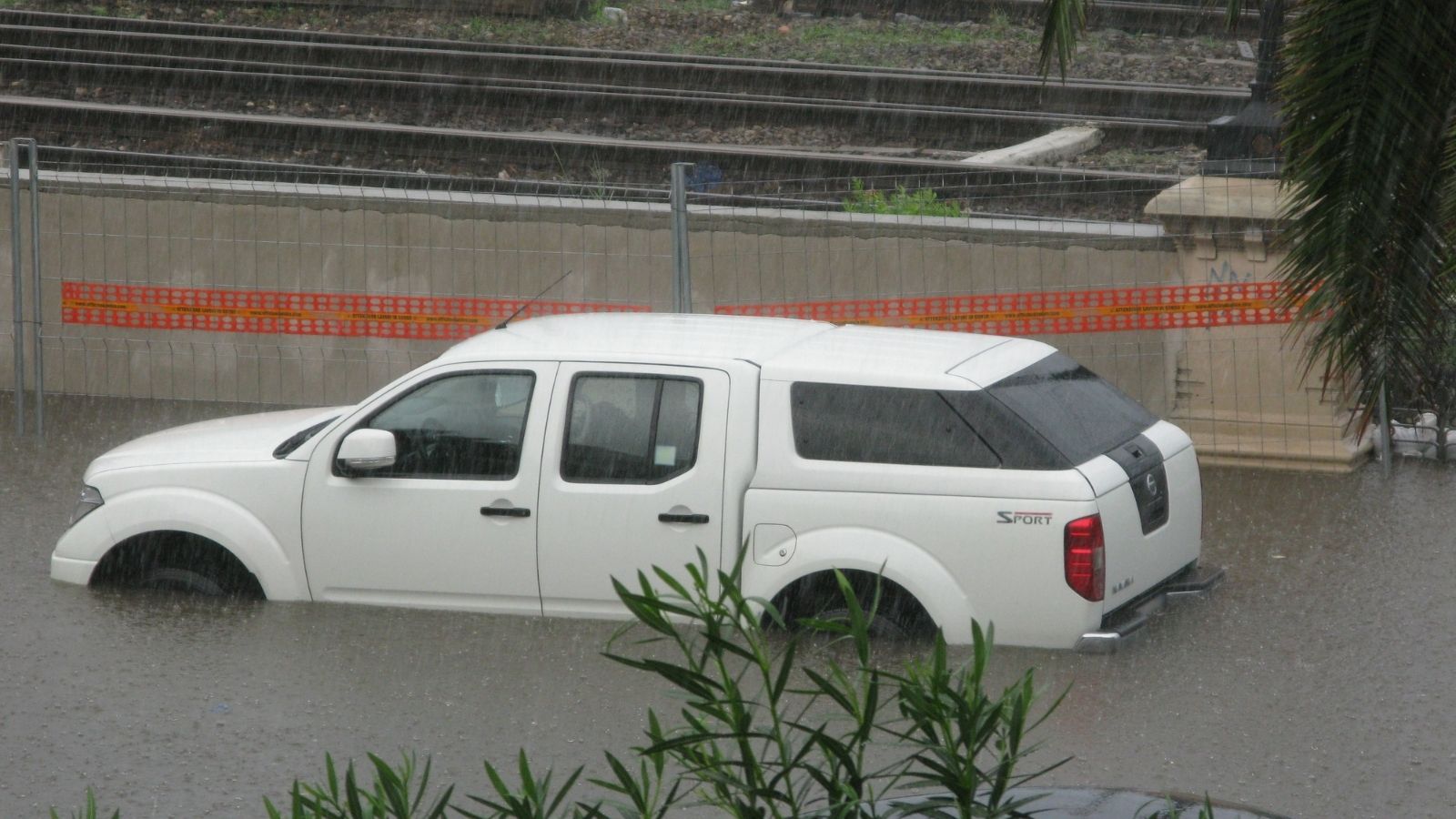
How to avoid used cars with flood damage
Unfortunately, flooding is occurring more often with the increase in big storms and hurricanes caused by global warming. Once the waters recede, there are other consequences: Lots and lots of cars with flood damage. Here are tips to detect problem vehicles.

Once again this year, we’re seeing devastating flooding in different parts of the country, and flooding is occurring more often with the increase in big storms and hurricanes caused by global warming. Most recently, it stemmed from Hurricane Ian.
In the weeks and months ahead, consumers should watch out for vehicles for sale that were damaged by flooding during Hurricane Ian.
Last year, CarFax Inc. estimated that 212,000 cars were damaged by flood waters from Hurricane Ida. That storm last year caused flooding from Louisiana all the way up to New York. How many of these vehicles ended up for sale on car lots or from private owners without the flood damage being disclosed? No one knows. But even one is too many. The same will surely happen in the aftermath of the latest hurricane.
The National Insurance Crime Bureau (NICB) says it’s not unusual for unethical dealers and dishonest individuals to take damaged cars, clean them up and try to sell them.
The current shortage of used cars on the market — and correlated increased prices — could make consumers more desperate and vulnerable to falling for a bad deal.
But superficial cleaning doesn’t remove the problems. Flooding causes long-term damage to different parts of the car, including the engine and brakes. That can lead to hefty costs of maintenance to keep the car going. Flooded vehicles should just be sold at salvage auctions for the parts not ruined by flood waters.
If a vehicle sustains serious flood damage and it’s covered by comprehensive insurance, the insurance company will generally reimburse the owner for the value before the car was flooded (after paying off any loan). The insurance company then will take ownership of the car, issue a salvage title and sell it to a salvage buyer. Salvage titles are normally given to cars damaged so severely that they lost more than 75 percent of the value.
A salvage title stays with the car unless it’s rebuilt and passes state inspection to get a rebuilt or reconstructed title. Insurance companies treat the car as a complete loss, so owners usually aren’t able to get repairs covered in any future accident if the car is classified as a salvage. There are some exceptions though, according to Justin Tomczak, spokesman for State Farm, the nation’s largest auto insurer. “A salvage vehicle may still qualify for insurance coverage as long as it meets all of our eligibility requirements,” he said.
If a flooded vehicle isn’t insured and it’s still driveable, a dishonest owner could try to sell it with the existing regular title to an unsuspecting buyer. According to Tomczak, State Farm officials “do not ask about prior damage when a customer is submitting an application for insurance.”
Even though they tend to be cheaper, you should generally avoid buying cars with salvage or rebuilt titles. They could cost a lot more in the long run. Sometimes, sellers will try to change the title fraudulently or unethically not point out the title shows the car is salvage or was rebuilt.
Buyers can take steps to avoid buying a flood-damaged car:
-
Look up the Vehicle Identification Number (VIN). You can get it from the seller. If you look at the car in person, it will be engraved on a plate on the dashboard. You can do a basic check of the car’s history through the National Insurance Crime Bureau’s VINCheck. Carfax also offers a free flood check of the car’s VIN.
This report will show what kind of title the vehicle has and its title history. Even if it’s a regular title, be suspicious if the car just came from one of the flood-ravaged states such as Florida or South Carolina. -
Have the car inspected by a professional you trust before buying it.
-
Inspect the car yourself. You are not a professional, but there are some telltale signs of flood damage that might tip you off before you pay for a professional inspection.
What to look for when inspecting a car for flood damage:
-
Make sure the VIN on the dashboard matches what you were given.
-
Smell for mold. Be suspicious if there’s an air freshener in the car, and see whether you can smell anything musty or earthy in nature. Some compare the smell of mold to that of sweaty socks.
-
Check under the rugs and seats for anything unusual, such as water stains or sand.
-
Look at any exposed metal such as uncovered screws. Make sure that the metal is not rusting. Also, peel back the rubber casings around electrical and mechanical connections, the NICB says. Materials containing iron may show signs of rust; materials containing copper may show a green residue; materials containing aluminum and alloys may show a white powder, the NICB says.
-
Look for signs of moisture buildup in the headlights.
-
See whether there is a visible waterline left inside from when the flood water.
-
On the flipside, the used car should not look like it is filled with new and clean parts. If you see that everything you check is brand new in this used car, you should check with the seller why they just replaced so much. Even if the car was cleaned heavily, the flood damage that you can’t see likely still exists, so the car should not be purchased.
-
Buy from a trusted dealer, the NICB says. If you’re dealing with a private seller and get a bad vibe, walk away.
-
Lastly, drive the car and see how it feels. Trust your instincts if the car feels weird to you in the way it accelerates, brakes or drives overall.
We all hope people selling cars damaged by flooding or anything else will be upfront with the history of the car, but that won’t necessarily be the case.
With Jacob van Cleef, former Consumer Watchdog Associate
Topics
Teresa Murray
Consumer Watchdog, U.S. PIRG Education Fund
Teresa directs the Consumer Watchdog office, which looks out for consumers’ health, safety and financial security. Previously, she worked as a journalist covering consumer issues and personal finance for two decades for Ohio’s largest daily newspaper. She received dozens of state and national journalism awards, including Best Columnist in Ohio, a National Headliner Award for coverage of the 2008-09 financial crisis, and a journalism public service award for exposing improper billing practices by Verizon that affected 15 million customers nationwide. Teresa and her husband live in Greater Cleveland and have two sons. She enjoys biking, house projects and music, and serves on her church missions team and stewardship board.
Find Out More

Is Alexa always listening? How to protect your data from Amazon

Safe At Home in 2024?

What the California Consumer Privacy Act means for you
